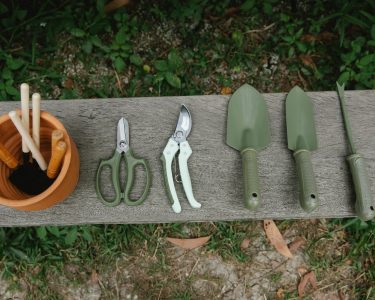Subtitle 1: The Joy of Growing Your Own Food
There is something truly magical about growing your own food. From planting the seeds to nurturing the plants, and finally harvesting the fruits of your labor, the process of homegrown food brings immense joy and satisfaction. Not only does it provide you with fresh, nutritious produce, but it also offers a sense of accomplishment and a deeper connection to nature. In this guide, we will explore the various benefits of growing your own food and provide practical tips to help you embark on this fulfilling journey.
Subtitle 2: Health Benefits of Homegrown Food
One of the primary advantages of growing your own food is the control you have over what you consume. By eliminating the use of harmful pesticides and chemicals, you can ensure that your produce is free from toxins. Homegrown fruits and vegetables are also richer in nutrients since they are harvested at their peak ripeness, unlike store-bought produce that may have been picked prematurely. Additionally, gardening is a physical activity that promotes exercise and reduces stress, contributing to overall well-being.
Subtitle 3: Getting Started: Planning Your Garden
Before you start digging in the dirt, it’s essential to plan your garden. Consider the available space, sunlight exposure, and the types of plants you want to grow. Some popular choices for beginners include tomatoes, herbs, lettuce, and peppers. Research the specific requirements of each plant, such as soil type, watering needs, and temperature preferences. This knowledge will help you create an optimal environment for your plants to thrive.
Subtitle 4: Preparing the Soil and Planting
Preparing the soil is a crucial step in ensuring successful growth. Remove any weeds or debris and amend the soil with organic matter, such as compost or aged manure, to improve its fertility. Follow the planting instructions for each crop, including the recommended spacing and depth. Water the newly planted seeds or seedlings gently and provide adequate moisture throughout their growth.
Subtitle 5: Nurturing Your Plants
To ensure healthy growth, it’s important to provide proper care for your plants. Regularly water them, keeping in mind that different plants have varying water requirements. Mulching around the plants can help retain moisture and suppress weed growth. Monitor for pests and diseases, and take appropriate measures to protect your plants, such as using organic pest control methods or companion planting.
Subtitle 6: Harvesting and Enjoying the Fruits of Your Labor
The most rewarding part of growing your own food is the harvest. As your plants mature, keep an eye on their progress and harvest when the fruits or vegetables are ripe. Enjoy the taste of freshly picked produce, knowing that it is free from chemicals and has been nurtured by your own hands. Share your bounty with friends and family, or explore the art of preserving and canning to enjoy your homegrown food throughout the year.
Subtitle 7: Growing Beyond Food: Flowers and Herbs
While growing food is a fantastic way to connect with nature, don’t limit yourself to just fruits and vegetables. Consider adding flowers and herbs to your garden as well. Flowers can beautify your space and attract beneficial insects, while herbs can enhance your culinary creations and provide medicinal benefits. Experiment with different varieties and discover the joy of growing a diverse range of plants.
Subtitle 8: The Journey of Harvesting Happiness
Homegrown food is not just about the end result; it’s about the journey itself. The process of tending to your garden, witnessing the growth of your plants, and reaping the rewards can bring immense happiness and fulfillment. It allows you to slow down, connect with nature, and appreciate the simple pleasures in life. So, grab your gardening tools, embrace the joy of growing your own food, and embark on a journey towards harvesting happiness.




